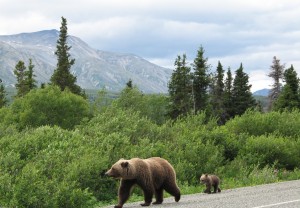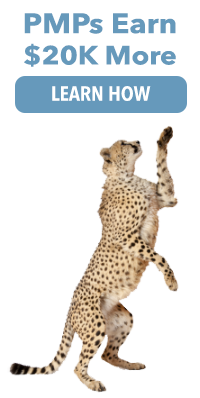Grizzly Eats 150 Pounds of Fish Out of Family’s Freezer
Sunday, November 9th, 2008Yes, this is a true story and it happened last week in Haines. The project behind this headline though is what is fascinating. Lets look at what I will call “Project Fish.” In Alaska, any state resident can get a “subsistence” fishing permit. This allows them to drift net fish for sockeye salmon. You can only drift net fish for sockeye (the most desireable of the salmon) with either a subsistence or a commercial permit. The goal is to catch enough fish to feed your family for a year (i.e. the reason for the term “subsistence.”). So the ultimate end game of “Project Fish” is to procure sufficient fish to feed your family throughout the year.
There are a number of ways to reach your end objective with “Project Fish.” Lets just look at three:
1. Get a subsistence permit and get the fish yourself. To capture enough fish to feed a family of four for the year, lets assume the family consumes 2 pounds of fish per day, if they ate fish every day of the year, they would need about 730 pounds of fish. (This is a LOT of fish). If each fish weighs fifteen pounds and they get ten pounds of usable meat per fish, this means they need to get 73 fish. If we assume they can catch approximately 7 fish per outing (some outings they will get none, and some they may hit the mother lode). This means they go out fishing ten times. Each fishing trip takes approximately six hours, and uses at least 5 gallons of gas. When they get home with the fish, it takes about a half hour to process each fish – this is another 3.5 hours. For easier math, lets just round this up to 10 hours for two people to catch and process 7 fish, that generates 70 pounds of usable protein. They then have to store the fish in a freezer so it can be consumed throughout the year. The freezer costs about $100 per year to run. The gas per trip is approximately $20. For ten trips that is $200 and for the year there are about $300 in maintenance costs to the boat. Lets assume they make a modest living and their time is each worth $20 per hour. This means it costs $4000 of their time to catch and process the fish (this is an “opportunity” cost as they are forsaking pursuing other opportunities where they could make $4000 – the opportunity costs are probably actually much higher for this specific family as they are able to bill out their time at far higher than $20 per hour). So, to feed their family of four fish every day for a year, it costs them $4600 (or $6.30 per pound of fish). Now lets toss in the expected monetary value of some large predator breaking into their freezer and eating about a quarter of their stash. The probability of this happening in alaska is yes, fairly high, especially if you clean the fish in your yard near where you are storing your fish. There are other risks as well – the freezer stops working and you lose all your fish (this happened to another family I know). Lets put the bear risk at 50% and the risk of the freezer not working at 25%. The bear risk tacks on another $450 to the price of the fish and the freezer not working risk tosses another $1075. This increases the price per pound of the usable fish protein for the family to $8.52.
2. Purchase the fish from a commercial fisherman during the sockeye season. The fisherman charges you $15 per fish (such a deal – you are afterall purchasing 73 fish, they do give you quantity discounts). It still takes two people a half hour each to process each fish. You still have your freezer costs. For comparison sake, lets still assume you are getting the 73 fish for the family of four. So it still takes a considerable amount of time to process the fish – 36.5 hours. You still have the freezer risk and depending on where you clean the fish, you may still have the bear risk. The total cost per pound of fish (including the same risks) with this scenario is $5.72. That is $2.80 less per pound of fish and you get the added benefit of you are supporting the commercial fishermen in the town. Good will in the community – priceless (see my post below on the value of social capital).
3. Purchase the fish as you want it from the local fish store (sometimes you can get deals – but it’s between $10 and $15 per pound depending on the time of year). In business terms this is called “Just in Time” – it has been a very hot manufacturing concept for the past decade. Assuming you eat fish three times a week as recommended by the AMA, this is 156 times per year. Your fish costs will be $3650 per year. You lose the need to have a freezer, you lose the risk of attracting very dangerous predators to your home. You save yourself at least a week’s worth of work (how much is your time worth) from scenario 1 and 2. AND you don’t subject your family to eating salmon every day of the year. You can mix it up a bit. Protein at even $5.72 per pound is a bit steep when you look at the cost of chicken, beef, pork, and the protein you get by mixing complex carbohydrates. Yes, salmon is good for you, but it does get a bit old every day of the year. I know, I often hear about it from my neighbors when they are over eating my grass fed, organic, belgium blue beef (my cows – a whole other story).
So the moral of this story – work on your career, support your local fisherman and your local fish dealer. Keep your family safe from the bears and be a part of the larger community by doing what it is you do best and supporting other people with what they do best.
P.S. It appears a homeowner in the neighborhood where the bear was grazing on unsecured food sources and garbage shot the bear. http://www.chilkatvalleynews.com/story-2.html What really galls me about this – the folks who horded the salmon as “subsistence” fishing that prompted the bear to raid their freezer consider themselves “environmentalists.” What total hypocrisy. The folks I know who truly need to subsistence fish and do so with some prudence, also make sure they secure the sources of food from bears so they don’t have to needlessly kill dangerous wildlife near their homes. A lack of project management leads to a dead bear.


